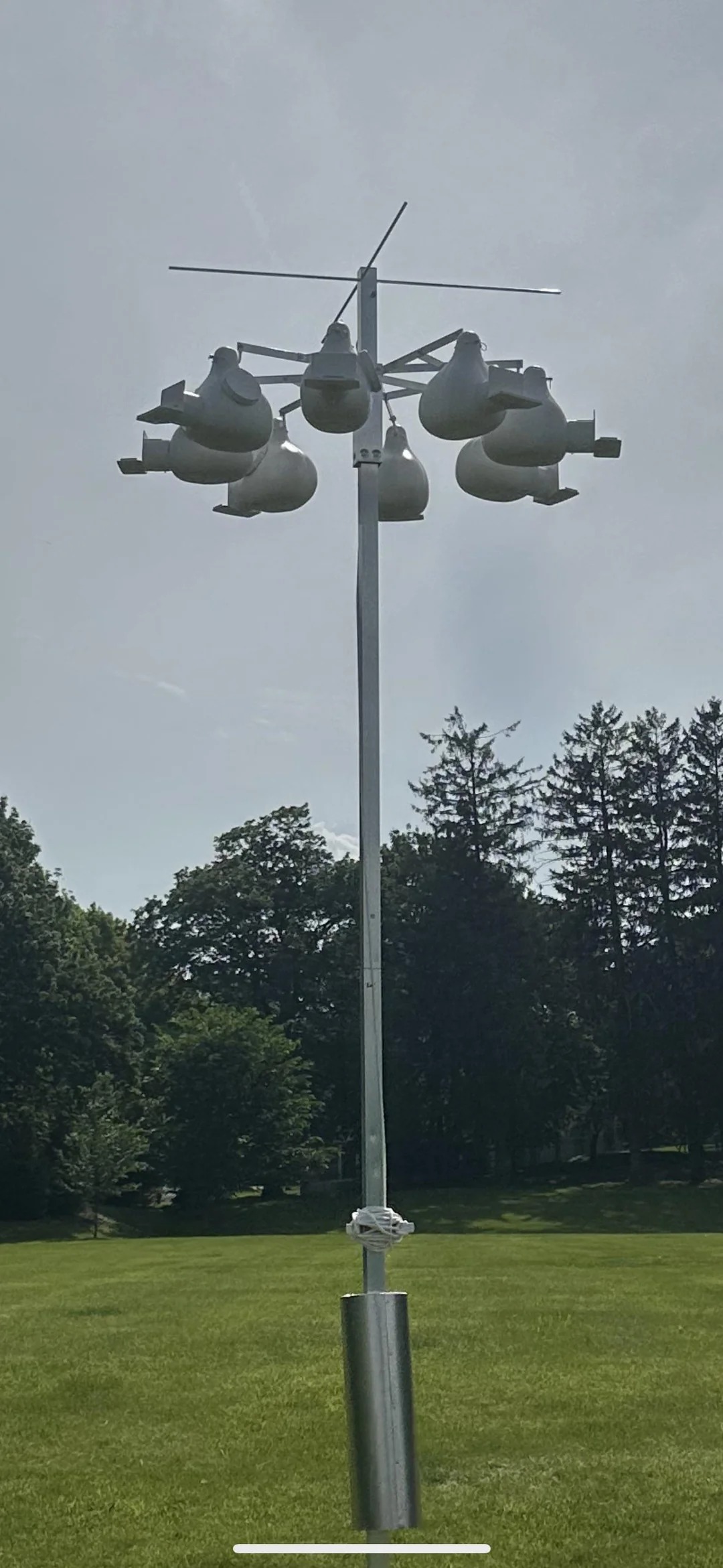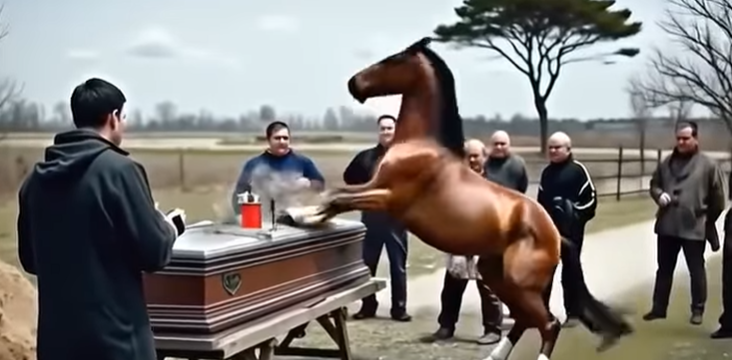If you’ve recently taken a walk through your local county park and noticed a tall metal pole with what appear to be strange white pods or futuristic surveillance devices hanging from it, you’re not alone in your curiosity. These odd-looking structures, often standing over 12 feet tall and clustered in an open field, may look like weather equipment or security cameras at first glance.

However, what you’re actually seeing is something much more charming and nature-friendly—they’re purple martin gourd houses. These hanging structures serve a very specific and vital purpose: to support the nesting habits of purple martins, one of North America’s most graceful and beloved migratory birds. Purple martins are the largest members of the swallow family in North America and are famous for their dazzling aerial skills and glossy, dark-blue feathers that shimmer with a blackish tint when seen from a distance. Watching them fly is a treat—they swoop, dive, and dart through the sky with stunning agility, catching insects mid-flight.
But what sets them apart from many other bird species is their unique reliance on human-provided housing, especially in the eastern regions of the United States where natural nesting cavities, such as those in hollow trees, have become increasingly rare. Because of this, purple martins have developed a special, almost symbiotic relationship with people. For generations, bird enthusiasts—often referred to as “landlords”—have built and maintained homes specifically designed to attract and support these birds each spring. The white bulbous containers you see hanging from those tall poles are modern versions of traditional gourd houses. In the past, Native American tribes and early American settlers used actual gourds, hollowed them out, and hung them up to provide nesting spots for martins.
Today’s versions are crafted from durable plastic and include enhancements that mimic the original design while offering more practical benefits. These gourd-style houses provide plenty of internal space for nests, offer better protection from predators, and include ventilation and drainage features to keep baby birds healthy in all kinds of weather. The way the gourds are arranged—usually clustered around a central pole—also reflects the social nature of purple martins. These birds enjoy living near others of their kind and prefer communal-style housing, making this setup ideal for attracting multiple pairs.
You might wonder why park authorities or conservation groups would install these gourd poles in public parks. The answer is pretty straightforward: parks provide the perfect environment for purple martins to thrive. These birds prefer wide-open spaces with clear flight paths and good visibility, allowing them to watch for predators and maneuver easily during flight. Parks, with their open fields and limited tall tree cover, meet all of these criteria. Installing purple martin housing in public spaces benefits everyone. For the birds, it provides a much-needed place to breed and raise their young. For people, it offers natural insect control—purple martins consume large numbers of flying bugs, especially mosquitoes—and an enjoyable opportunity to observe and learn about local wildlife. Many parks also use these installations as part of educational outreach programs, giving visitors a chance to learn more about bird conservation and ecology. Some even monitor and track the success of these colonies, tweaking the housing design or maintenance routines to improve nesting outcomes. In terms of what you’re seeing at the park, the pole itself is likely equipped with several key features: multiple gourd-shaped units, each acting as an individual nesting chamber; a telescoping pole or pulley system that allows caretakers to lower the gourds for cleaning, inspection, or chick monitoring; and a smooth metallic section at the bottom of the pole that acts as a guard to deter climbing predators like raccoons or snakes. So the next time you pass by one of those strange-looking poles, know that it’s not surveillance equipment or a weather tracker—it’s actually a high-rise bird condo, built with care to support one of the most remarkable birds in North America.





